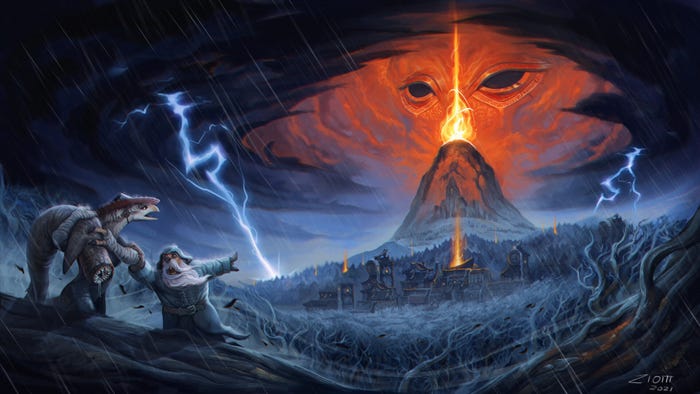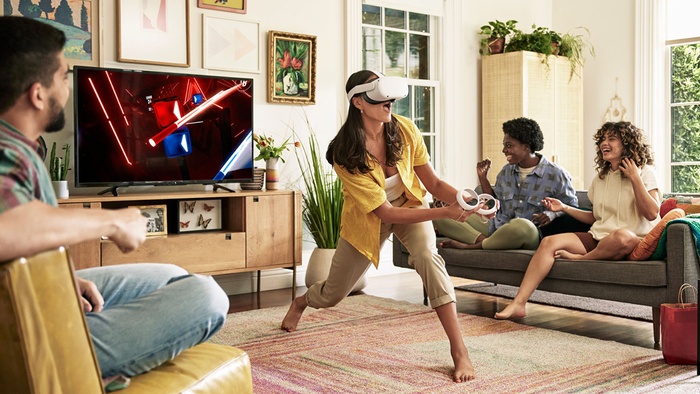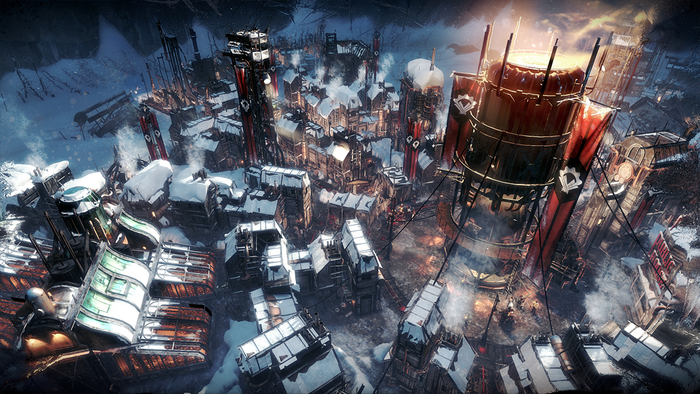Obsidian Project Eternity lead Josh Sawyer articulates the storytelling approach unique to olds chool RPGs, and the challenge -- and opportunity -- in unapologetically-niche design.

As of press time, Obsidian's new, old-school style isometric RPG Project Eternity has raised over 2 million dollars on Kickstarter. That's not just a testament to the power of developers making the games they want to make, says project director Josh Sawyer -- but also an endorsement of the idea that making games as broadly-appealing as possible isn't necessarily the ideal strategy anymore. The approach to the game is designed to recall games like Baldur's Gate and Icewind Dale with the distinctive signature of the BioWare-originated Infinity Engine: "We're using Unity, but what we're doing is using pre-rendered 2D backgrounds with probably some 2D flipbook animations in the background," explains Sawyer, "but also 3D characters and 3D animated environments and props when necessary, and trying to blend the lighting and shadows together." Inherent in that style is a shift away from modern narrative models, interesting for a developer and breed of game generally beloved for its expansive story-oriented environments. Although a strong vein of modern design wisdom favors a basic "show don't tell," and emphasizes revealing story elements through gameplay, this style of game is text-heavy, descriptive and lore-rich. What happened to the whole "players don't read" thing? And can less lifelike and more abstracted character interaction actually be more immersive to roleplaying fans? In some cases, yes: Sawyer agrees that the current mainstream trend towards an increasing simulation of reality has limitations, and that devs interested in telling stories might have more flexibility and opportunity if they took an overhead view of their world.
Reading between the lines
"It's kind of a worn-out phrase, but the uncanny valley is a thing," says Sawyer. In fact, his team even did an internal experiment regarding their approach to cutscenes, wherein they wanted to see if they could emulate favorite film scenes shot for shot, including the fidelity of actors' facial expressions and gestures. "It was hard as f*ck," Sawyer says. "It was insane, the amount of subtle head movements, facial stuff... it really nailed home for us that goddamn, this is hard. It was cool, but then again, when you're free from the need to really labor over something just to not break the illusion, it also frees the player up to use their imagination a bit more." Sawyer recalls a particular element of 1992 MicroProse RPG Darklands, whereby interactions were only subtly illustrated via text against loose watercolor illustrations. The images were enough to suggest key elements, but it was the text that carried the imagery. Older games with technical limitations had to get very creative about how to immerse players and capture their imaginations, says Sawyer, since they didn't have the option to be literal -- and that's something Obsidian wants to keep in mind through the old-school visuals and interface of Project Eternity. And when it comes to the idea that today's audiences don't like to read text, or that communicating a story through prose rather than through gameplay automatically represents some kind of narrative failure, Sawyer isn't sold. The idea that all players should like the same things, or that players can be segregated into "ones that like story" and "ones that like combat" seem equally fallacious to him. "This has been bugging me a lot lately," he says. "In the past few years there's been a trend toward designing games with mechanics for people who don't like those mechanics, and it blows my mind... I look at a lot of mechanics, like 'hey, let's write dialog for people who don't like to read!' You were writing with the assumption that they do want to read some of it, right? If people don't want to read, why are we writing? And if people don't like combat, why do you have combat in it?" Certainly it's possible that dialog that's too long or requires editing could be a problem for some players, and a balance always needs to be struck, and proper pacing always needs to be employed. A system like Mass Effect's, where players are rewarded with XP for reading lore, strikes Sawyer as a little odd: Players that enjoy lore will read it anyway, and players that don't like reading lore will quickly flip through as with any other chore just to get the points -- and still won't read it. Generally the audience for the Project Eternity style of game does like to read, and appreciates a rich base of lore as well -- and the Obsidian team will focus on those players, rather than make adjustments for a perceived modern audience that is presumed not to want certain features. "When it comes to games like this that are crowdsourced for an audience that is very passionate... we can cater to niche audiences like that," Sawyer says. "We can design for the people that already like this stuff, and that is okay. Not everything needs to be made to reach a mainstream audience."
Expect the highly expected
The double-edged sword of crowdfunding to a passionate niche is the challenge of meeting the often very-specific and high expectations. Fortunately Sawyer has a lot of experience in selecting constructive takeaways: His earliest jobs in the industry involved facing the comminity, starting out as the webmaster for Black Isle in 1999, when game communities online were a massive wild west of exploits, culture and intense community. From there he learned to be circumspect about joining discussions, soliciting dialogue and selecting the most viable feedback. Project Eternity will be in fairly equal parts real-time strategy, tactical combat and storytelling, and various kinds of players may want a little more of one and a little less of another. But again, the game will be what the developer wants it to be -- although there will be varying difficulty levels, there's no option to "opt out" of any individual element. "It's just about managing a lot of competing expectations, and sometimes it can be overwhelming because you see so many divergent opinions," says Sawyer of the communications challenge. Some players will chime in and say they adore everything about the old Infinity Engine games -- except those core design tenets that identified them.  "It's hard and sometimes it's frustrating," he admits. But the team tackles the communication challenge by keeping the discussion high-level, and being sparing about specifics -- that way they're always being truthful, but offering a vocal and conflicted userbase fewer bones to pick. It's all about fully leveraging the opportunity to make the precise game that the team wants to make, and being willing to be okay with the fact that it might not be for everyone. That's one of the major opportunities for studios with Obsidian's pedigree in the crowdfunding age. "I'm not as hostile toward big studio development as some people are," says Sawyer. "It doesn't threaten me at all... however, I'm really glad if we can fragment, and make extremely niche games, or sort of niche games, or mainstream games, it's all great." And while Obsidian may now reject the unified trend toward mainstreaming niche genres, Sawyer believes ultimately it was good for his colleagues and peers. "Especially in the RPG genre, we were so focused on the hardcore, and on ingrained tradition," he says. "We had insular, specific ways of doing things that had been done that way for so long. Once you said to developers, 'hey, how about you sell this game to someone who hasn't played D&D... it was a big wake-up call'." "It made us do things we would not have normally been comfortable doing," he says of his experience learning to focus on a wider audience. "And now there can be RPGs [with a] lower barrier to entry, that are more for people who just want to go to a cool fantasy, or post-apocalyptic or sci-fi world and do things where the systems are forgiving." "But it's nice that we can now say, okay, knowing all the stuff we know about mechanics that are really, on a fundamental level, shitty for everyone, and the only reason anyone tolerated them was because of convention? Now we don't have to do that," he adds. Of course, Obsidian will make it so that players can turn off intuitive features like quest markers in Project Eternity if they don't want them. Some people are just super old-school like that.
"It's hard and sometimes it's frustrating," he admits. But the team tackles the communication challenge by keeping the discussion high-level, and being sparing about specifics -- that way they're always being truthful, but offering a vocal and conflicted userbase fewer bones to pick. It's all about fully leveraging the opportunity to make the precise game that the team wants to make, and being willing to be okay with the fact that it might not be for everyone. That's one of the major opportunities for studios with Obsidian's pedigree in the crowdfunding age. "I'm not as hostile toward big studio development as some people are," says Sawyer. "It doesn't threaten me at all... however, I'm really glad if we can fragment, and make extremely niche games, or sort of niche games, or mainstream games, it's all great." And while Obsidian may now reject the unified trend toward mainstreaming niche genres, Sawyer believes ultimately it was good for his colleagues and peers. "Especially in the RPG genre, we were so focused on the hardcore, and on ingrained tradition," he says. "We had insular, specific ways of doing things that had been done that way for so long. Once you said to developers, 'hey, how about you sell this game to someone who hasn't played D&D... it was a big wake-up call'." "It made us do things we would not have normally been comfortable doing," he says of his experience learning to focus on a wider audience. "And now there can be RPGs [with a] lower barrier to entry, that are more for people who just want to go to a cool fantasy, or post-apocalyptic or sci-fi world and do things where the systems are forgiving." "But it's nice that we can now say, okay, knowing all the stuff we know about mechanics that are really, on a fundamental level, shitty for everyone, and the only reason anyone tolerated them was because of convention? Now we don't have to do that," he adds. Of course, Obsidian will make it so that players can turn off intuitive features like quest markers in Project Eternity if they don't want them. Some people are just super old-school like that.
About the Author(s)
You May Also Like







